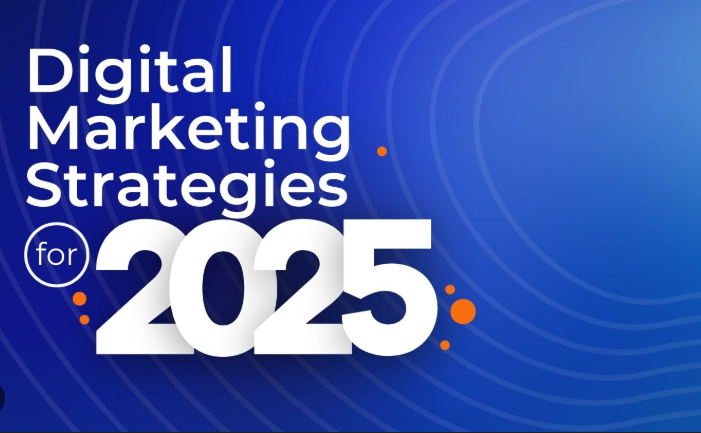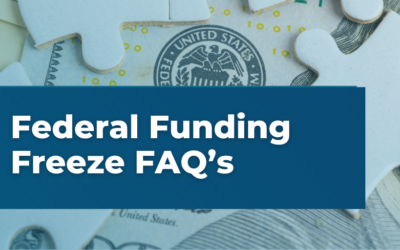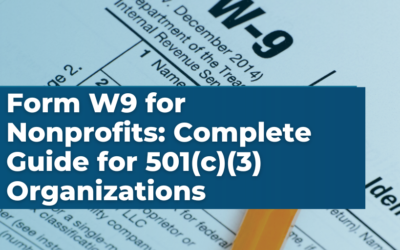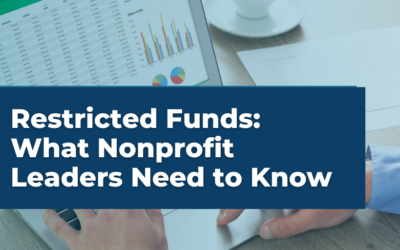In today’s fast-paced digital landscape, nonprofits can no longer rely solely on traditional outreach methods to engage donors, volunteers, and the communities they serve. As we step into 2025, digital marketing is not just an option—it’s a necessity. Whether you’re a small charity or a large nonprofit organization, mastering digital marketing can transform your fundraising efforts, boost your visibility, and ultimately help you make a bigger impact. In this comprehensive guide, we’ll walk through the key strategies you need to succeed online, share some expert insights, and point you toward resources that can help elevate your efforts.
Understanding the Nonprofit Digital Landscape in 2025
Over the past decade, the digital world has evolved dramatically. From social media trends to search engine algorithms, staying current is crucial. In 2025, nonprofits are increasingly leveraging digital channels to tell their stories, connect with supporters, and drive action. With donors and volunteers spending more time online than ever, having a strong digital presence can make the difference between thriving and just getting by.
The digital landscape offers unparalleled opportunities for nonprofits:
- Broader Reach: Social media and digital advertising enable you to reach audiences beyond your immediate geographic area.
- Storytelling at Scale: Digital platforms allow you to share success stories, behind-the-scenes looks, and personal testimonials that build trust.
- Real-Time Engagement: Instant feedback through likes, comments, and shares helps you gauge the effectiveness of your campaigns and adjust in real time.
Understanding these trends is the first step. And while the digital world might seem overwhelming, breaking it down into manageable strategies can simplify the process and maximize your impact.
Why Digital Marketing Is Critical for Nonprofits
Digital marketing isn’t just about getting more eyes on your website—it’s about building a community of engaged supporters who believe in your mission. Here’s why every nonprofit should invest in a robust digital marketing strategy:
1. Enhanced Donor Engagement
Today’s donors expect transparency and personal connection. Digital channels give you the tools to interact directly with your supporters, answer their questions, and provide regular updates on how their contributions are making a difference.
2. Cost-Effective Outreach
Compared to traditional advertising, digital marketing can be highly cost-effective. Social media platforms, email newsletters, and content marketing allow nonprofits to reach a large audience with a relatively small budget. This is especially important when every dollar counts.
3. Data-Driven Decisions
Digital marketing provides a wealth of data. Analytics tools help you understand which campaigns are performing best, enabling you to refine your strategy for even better results. As federal agencies increasingly emphasize transparency and accountability, leveraging data is a smart way to stay ahead. For example, the IRS provides guidelines for tax-exempt organizations that underscore the importance of transparent operations and reporting.
4. Adaptability and Innovation
The digital sphere is continually evolving. New platforms, tools, and techniques emerge regularly, allowing nonprofits to experiment with innovative ways to reach their audience. This adaptability is key to staying relevant and competitive in 2025 and beyond.
Core Digital Marketing Strategies for Nonprofits
Let’s dive into the specific strategies you should consider incorporating into your digital marketing plan.
1. Website Optimization
Your website is often the first point of contact for potential donors and volunteers. A modern, responsive website that is easy to navigate can significantly boost your credibility. Focus on:
- User Experience (UX): Ensure your website is mobile-friendly, loads quickly, and has clear calls-to-action.
- Search Engine Optimization (SEO): Optimize your content for search engines to improve visibility. Use keywords related to your mission and services.
- Storytelling: Share compelling narratives that resonate with your audience. Visual elements like images and videos can enhance your story and drive engagement.
A well-optimized website not only attracts visitors but also converts them into loyal supporters. Think of it as your digital headquarters—a place where every visitor can learn about your mission and how to get involved.
2. Content Marketing
Content is king—even for nonprofits. High-quality, informative content can help you build authority and trust among your supporters. Consider creating:
- Blogs and Articles: Regularly publish posts that highlight success stories, explain the impact of donations, or share expert advice on issues related to your mission.
- Ebooks and Guides: Offer in-depth resources that provide value, such as guides on digital marketing for nonprofits or strategies for community engagement.
- Infographics and Visuals: Simplify complex data and information with visually appealing graphics.
When crafting content, be sure to address the unique challenges and opportunities facing nonprofits. Your content should not only inform but also inspire action.
3. Social Media Strategy
Social media is one of the most powerful tools in your digital marketing arsenal. Platforms like Facebook, Twitter, LinkedIn, and Instagram offer unique ways to engage with your audience. Here are a few tips:
- Platform Selection: Focus on the platforms where your target audience is most active. For nonprofits, visual platforms like Instagram and Facebook can be especially effective.
- Consistent Posting: Maintain a regular posting schedule to keep your audience engaged. Mix up your content with updates, photos, videos, and success stories.
- Engagement: Don’t just post—engage. Respond to comments, ask questions, and create interactive content like polls or live Q&A sessions.
Social media can help you create a community around your cause. By telling your story in an authentic, relatable way, you’ll build lasting connections with your supporters.
4. Email Marketing
Email remains one of the most effective channels for reaching supporters. A well-crafted email marketing campaign can drive engagement and encourage donations. Here’s how:
- Segmentation: Divide your email list into segments based on interests, donation history, or engagement level. This allows you to tailor your messages for maximum impact.
- Personalization: Use personalized greetings and relevant content to make each subscriber feel valued.
- Clear Calls-to-Action: Whether it’s donating, volunteering, or attending an event, make sure your emails include clear, compelling calls-to-action.
Email marketing not only nurtures relationships with existing supporters but also serves as a reliable channel for urgent appeals and updates.
5. Search Engine Optimization (SEO)
SEO isn’t just for for-profit businesses—it’s essential for nonprofits as well. A strong SEO strategy ensures that your website appears prominently in search results when potential supporters are looking for information related to your cause. Key SEO tactics include:
- Keyword Research: Identify keywords that are relevant to your mission and content. Use these keywords naturally throughout your website and blog posts.
- Backlinks: Build quality backlinks from reputable sites, including federal resources where appropriate. For instance, referencing guidelines from the IRS on nonprofit operations can add authority to your content.
- Local SEO: If your nonprofit serves a specific geographic area, optimize your website for local searches.
Investing in SEO is a long-term strategy that can continuously drive organic traffic to your website, helping you connect with more potential supporters.
6. Paid Advertising and Remarketing
While organic reach is valuable, paid advertising can help you quickly amplify your message. Platforms like Google Ads and social media ads allow you to target specific demographics and interests. Consider these tips:
- Budgeting: Even a small budget can make a significant impact if used wisely. Start small, measure the results, and scale up what works.
- Remarketing: Use remarketing techniques to target visitors who have already interacted with your website or social media profiles. This can increase conversion rates by reminding potential donors about your cause.
Paid advertising is especially useful for time-sensitive campaigns or special events. When done correctly, it can drive immediate engagement and bolster your overall digital marketing efforts.
7. Data Analytics and Performance Measurement
Data is at the heart of effective digital marketing. By tracking metrics and analyzing results, you can fine-tune your strategies and maximize your return on investment. Key areas to focus on include:
- Website Analytics: Use tools like Google Analytics to monitor traffic, user behavior, and conversion rates.
- Social Media Metrics: Track engagement, reach, and follower growth across your social media platforms.
- Email Performance: Monitor open rates, click-through rates, and conversion rates for your email campaigns.
- Campaign ROI: Evaluate the performance of paid advertising campaigns to ensure they are meeting your goals.
Regularly reviewing your data helps you understand what’s working and what needs adjustment. This continuous improvement process is essential for staying ahead in the digital marketing game.
8. Multimedia Content: Video, Podcasts, and Interactive Media
In 2025, multimedia content is more important than ever. Videos, podcasts, and interactive content not only capture attention but also convey your message in engaging ways. Consider creating:
- Videos: Share behind-the-scenes footage, donor testimonials, and impact stories. Platforms like YouTube and Instagram are perfect for video content.
- Podcasts: Start a podcast series to discuss issues related to your cause, feature expert interviews, and share success stories.
- Interactive Content: Infographics, quizzes, and interactive timelines can make complex information more accessible and engaging.
Multimedia content can help humanize your nonprofit, making it easier for supporters to connect with your mission on a personal level.
Digital Marketing on a Budget
Not all nonprofits have large marketing budgets, but that shouldn’t deter you from pursuing robust digital marketing strategies. Here are some budget-friendly tips:
- Leverage Free Tools: There are many free or low-cost digital marketing tools available, such as Google Analytics, Mailchimp (for email marketing), and Canva (for graphic design).
- Volunteer Expertise: Tap into the skills of your supporters. Many professionals are willing to volunteer their time and expertise in areas like web design, social media management, and content creation.
- Repurpose Content: Create content that can be adapted across multiple platforms. A single blog post can be transformed into a video, social media posts, or even an infographic.
- Collaborate and Network: Partner with other nonprofits or local businesses for joint campaigns or guest blog posts. These collaborations can expand your reach without significant financial investment.
For example, if you need specialized support in managing your financial operations alongside your digital marketing, consider leveraging professional services. Explore tailored solutions such as nonprofit bookkeeping and accounting, nonprofit taxes, or even nonprofit CFO services. These services can help ensure that your financial operations align with your digital strategies, keeping your organization both innovative and compliant.
Legal and Compliance Considerations
While diving into digital marketing, nonprofits must also be mindful of legal and regulatory requirements. Maintaining transparency, accountability, and compliance is not only best practice—it’s a federal mandate for many organizations. Here are a few considerations:
Privacy and Data Protection
With digital marketing comes the responsibility to handle donor data responsibly. Familiarize yourself with federal data protection regulations and best practices for safeguarding personal information. This includes using secure forms, ensuring your website complies with privacy policies, and regularly updating your data protection measures.
Tax-Exempt Compliance
Nonprofits must adhere to guidelines set by the IRS to maintain tax-exempt status. Regularly review IRS guidelines for charities and nonprofits to ensure your digital marketing practices align with federal requirements. Transparent communication about your use of funds and impact is critical.
Accessibility Standards
Ensuring your digital content is accessible to all users, including those with disabilities, is not just an ethical imperative but often a legal one. Implement accessibility best practices on your website and digital content to make your message inclusive.
Leveraging Professional Support and Outsourced Services
Even with a dedicated team, nonprofits can benefit greatly from specialized support in their digital marketing journey. Whether it’s refining your SEO strategy, enhancing your website, or managing your social media presence, sometimes it’s best to bring in the experts.
For instance, organizations like Velu offer a comprehensive range of services tailored specifically for nonprofits. They understand the unique challenges that nonprofits face—from budget constraints to compliance issues—and provide solutions that blend digital marketing expertise with robust financial management services. Their offerings include:
- Digital Strategy and Marketing Services: Helping you craft and implement a digital marketing plan that resonates with your audience.
- Nonprofit Bookkeeping and Accounting: Streamline your financial operations and ensure that every dollar is accounted for, helping you stay compliant and transparent. Learn more about this service here.
- Nonprofit Taxes: Navigate the complex world of tax-exempt regulations with expert guidance. More details can be found here.
- Nonprofit CFO Services: Strategic financial leadership can make all the difference. If you need high-level financial oversight, check out their Nonprofit CFO service.
By leveraging professional support, you can focus more on your mission while ensuring that your digital marketing and financial strategies are executed with precision.
Future Trends in Nonprofit Digital Marketing
As technology continues to evolve, so too will the strategies that drive successful digital marketing for nonprofits. Here are some trends to keep an eye on as we move further into 2025:
Artificial Intelligence and Automation
AI-driven tools are beginning to revolutionize digital marketing. From chatbots that handle donor inquiries to automated email marketing campaigns, AI can help streamline processes and deliver personalized experiences at scale.
Enhanced Data Analytics
The ability to collect and analyze data will only become more critical. Advanced analytics tools can provide deeper insights into donor behavior, campaign performance, and emerging trends, allowing nonprofits to make smarter, data-driven decisions.
Integrated Social Media Platforms
Social media platforms are expected to become even more integrated with e-commerce and fundraising tools. This means your social media strategy will not only be about engagement but also about seamless conversion experiences—turning followers into active supporters.
Mobile-First Strategies
With an increasing number of users accessing digital content on mobile devices, mobile-first design and marketing strategies will be crucial. Ensuring that all your digital assets are optimized for mobile can significantly boost engagement and conversion rates.
Storytelling Through Emerging Media
Virtual reality (VR), augmented reality (AR), and interactive multimedia experiences are poised to change the way nonprofits tell their stories. These emerging technologies can provide immersive experiences that deeply connect supporters to your mission.
Conclusion
Digital marketing is a dynamic, ever-evolving field—and for nonprofits in 2025, it represents a golden opportunity to drive engagement, boost donations, and amplify their impact. By optimizing your website, harnessing the power of content marketing, leveraging social media, and using data to drive your decisions, you can create a digital presence that not only attracts attention but also builds lasting relationships.
Remember, success in digital marketing isn’t achieved overnight. It’s about continuous improvement, learning from analytics, and adapting to new trends. And while it might seem daunting at first, especially on a tight budget, there are plenty of resources and expert services available to help you along the way.
For those ready to take their nonprofit’s digital marketing efforts to the next level, consider exploring the suite of professional services available at Velu. Whether you need comprehensive digital strategy guidance or specialized support like nonprofit bookkeeping and accounting, nonprofit taxes, or nonprofit CFO services, there’s a wealth of expertise available to help your organization succeed.
By embracing digital marketing, nonprofits not only enhance their ability to tell their story but also build stronger, more sustainable relationships with donors, volunteers, and communities. As we look ahead to the opportunities and challenges of 2025, one thing is clear: the future of nonprofit marketing is digital, dynamic, and incredibly promising.
As you refine your digital strategy, keep in mind that each campaign is a chance to learn, iterate, and grow. Use the insights gained from every click, share, and donation to continually fine-tune your approach. And always remember to stay compliant with federal guidelines—such as those provided by the IRS for charities and nonprofits—ensuring that your organization remains transparent and accountable to your supporters.
In the world of digital marketing, innovation and adaptability are your greatest assets. Whether you’re launching a new social media campaign, rolling out a targeted email series, or investing in cutting-edge multimedia content, each step you take brings you closer to your ultimate goal: making a measurable difference in the lives of those you serve.
Now is the time to harness the power of digital marketing. Embrace these strategies, invest in your digital presence, and watch as your nonprofit not only grows in size but also in impact. Here’s to a successful 2025, where every click, every share, and every engagement translates into real-world change.
By following the strategies and insights outlined in this guide, your nonprofit can build a powerful digital presence that resonates with modern supporters. The digital landscape may be challenging, but with the right tools, a bit of creativity, and the willingness to adapt, you can transform your organization’s outreach and achieve lasting success. Happy marketing!





